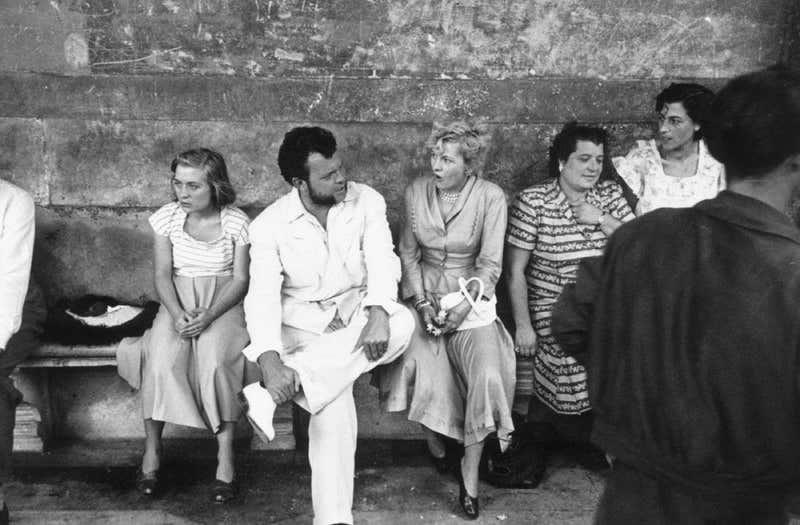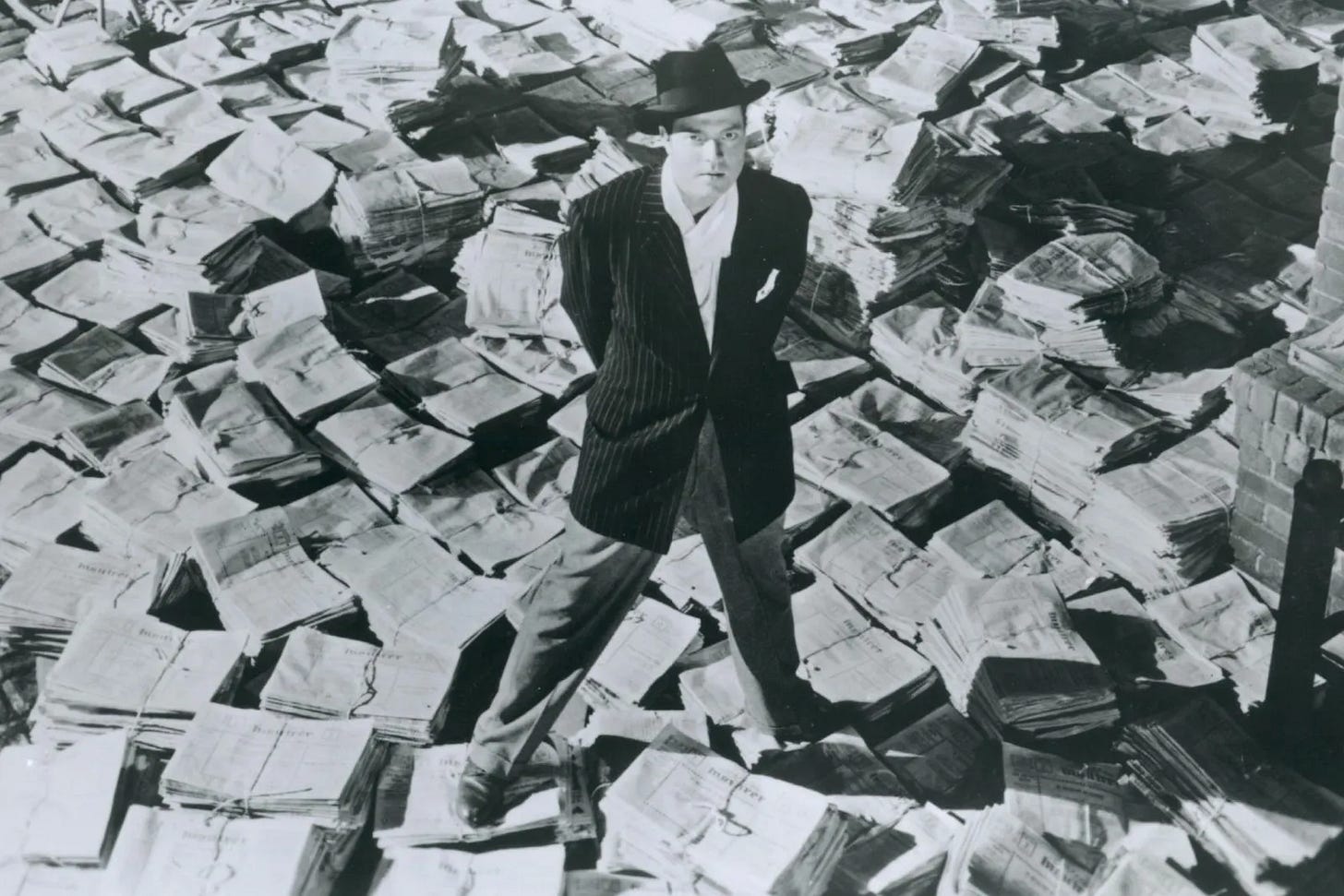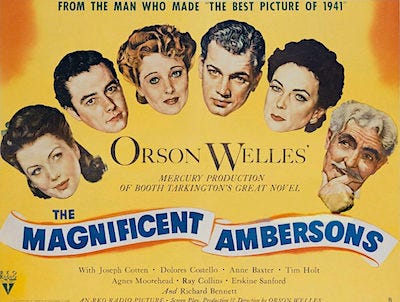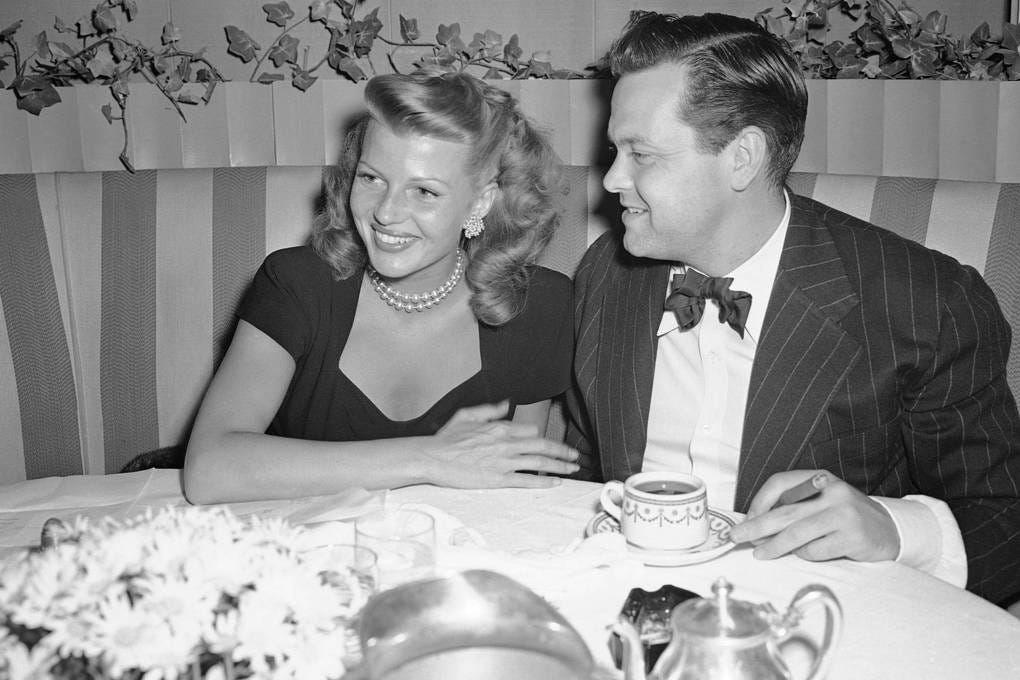
Orson Welles: a name synonymous with groundbreaking cinema and a life that was as dramatic off-screen as it was on.
With a career that soared to meteoric heights and plummeted to crushing lows, Welles was the ultimate cinematic maverick.
In this Adorable Story, we'll delve into his captivating world: get ready to step into the shoes of a true legend and discover why Orson Welles remains to this day a titan of the silver screen.
Early Life
Orson Welles was born on May 6, 1915, in Kenosha, Wisconsin, to Richard Head Welles and Beatrice Ives Welles. His father was a well-to-do inventor, while his mother was a talented pianist.
The family moved to Chicago when Welles was four, where he later attended the progressive Todd School for Boys in Woodstock, Illinois.
His mother, Beatrice, died of hepatitis on May 10, 1924, when Orson was just nine years old. His father, Richard, struggled with alcoholism and, as his health declined, died of heart and kidney failure on December 28, 1930. Orson was 15 years old at the time1. The early loss of both his parents had a significant impact on his life and shaped his character in many ways.
Welles channeled his emotions and experiences into his creative pursuits: the Todd School was known for its progressive approach to education and encouraged students to explore their talents in various fields. This environment allowed Welles to thrive and develop his skills in acting, writing, and directing. He immersed himself in the world of theatre and immediately began to create a name for himself as a talented young actor.
As he grew older, Welles continued to cope with the loss of his parents: for the rest of his career, his work often explored themes of loss, power, and the complexities of human relationships.
Career Beginnings
After graduating from the Todd School for Boys in 1931, Orson Welles refused a full scholarship from Harvard University and decided to embark on a journey to Europe, intending to become a painter. While traveling across the old continent, he visited Ireland and decided to stop in Dublin, where he was captivated by the city's thriving theatre scene.
Welles, already drawn to the world of arts and drama, decided to try his luck in the Irish theatre scene. He brashly claimed to be a famous Broadway actor to gain an audition at the Gate Theatre, a well-known Dublin theatre company led by Hilton Edwards and Micheál Mac Liammóir. Impressed by his talent, they offered him a role, and, at the age of 16, his life-long professional acting career began.
Welles' time in Dublin proved to be a crucial stepping stone in his career, as it allowed him to hone his acting skills and gain valuable experience (off and on stage) before returning to the United States.
He returned to the United States in 1933 and joined the Federal Theatre Project, a part of the Works Progress Administration (WPA), which was a government-funded program aimed at providing employment to artists during the Great Depression.
In 1937, Welles co-founded the Mercury Theatre with John Houseman2, which allowed him to exercise his full spectrum of talents in writing, directing and acting. The Mercury Theatre produced several critically acclaimed stage productions, including a modern-dress adaptation of Shakespeare's "Julius Caesar" in 19373.
Welles gained national recognition with the infamous radio adaptation of the H.G. Wells' science fiction novel "The War of the Worlds" on October 30, 1938: the broadcast caused widespread panic across the United States, as many radio listeners believed it was a genuine news report of an alien invasion.
Cinematic Breakthrough
"I started at the top and worked my way down."
At only 25 years old, Welles made his film directorial debut with "Citizen Kane," which he also co-wrote, produced, and starred in.
Released on May 1, 1941, the film was a groundbreaking achievement, showcasing innovative cinematography, narrative structure, and sound design.
"Citizen Kane" is also a rich character study that explores themes of power, ambition, the pursuit of happiness, and the complexity of human relationships. The story of Charles Foster Kane serves as a cautionary tale about the corrupting influence of wealth and power and the ultimately hollow nature of material success.
For this cinematic effort, Welles received the Oscar for Best Original Screenplay, which he co-wrote with Herman J. Mankiewicz. "Citizen Kane" was also nominated for eight other Academy Awards, including Best Picture and Best Director.
Orson Welles’ debut on the silver screen is often hailed as one of the greatest movies ever made, and its influence on filmmaking is still evident today.
Subsequent Films and Career Highlights
Welles continued to make films throughout his career, including:
"The Magnificent Ambersons" (1942): an adaptation of Booth Tarkington's novel, which was critically acclaimed but faced studio interference that led to Welles losing creative control over the final cut.
"Touch of Evil" (1958): a noir thriller, which has since become a cult classic for its innovative use of long takes and low-angle shots.
"Chimes at Midnight" (1965): also known as “Falstaff”, this an adaptation of several Shakespeare plays, focusing on the character of Falstaff, a role Welles played himself.
Key Contributions to the World of Cinema
"Style is knowing who you are, what you want to say, and not giving a damn"
Orson Welles' films are revered for their artistic vision, technical innovation, and powerful storytelling. His work has been influential in shaping modern cinema, inspiring filmmakers like Steven Spielberg, Martin Scorsese, and Stanley Kubrick. Some key contributions Welles made to the world of cinema include:
Narrative Innovation: Welles' movies, particularly "Citizen Kane," challenged conventional storytelling, using non-linear narrative structures and complex character development. The film's enigmatic protagonist, Charles Foster Kane, is revealed through a series of fragmented flashbacks, providing a multifaceted view of his life and personality.
Cinematography Techniques: Welles and his cinematographers, like Hollywood legend Gregg Toland, employed deep focus, low-angle shots, and long takes, which have since become staples in modern filmmaking. Deep focus allowed for objects in both the foreground and background to remain in sharp focus, creating visually rich and dynamic scenes.
Sound Design: Welles' background in radio allowed him to experiment with sound in his films, using layered audio and innovative sound effects to enhance storytelling. In "Citizen Kane," the overlapping dialogue and inventive use of sound help create a realistic and immersive atmosphere.
Challenging Studio Control: Welles constantly fought for creative control over his films, often clashing with studios that sought to dictate the final product. His battles with studio executives, while often costly to his career, demonstrated the importance of artistic integrity and the value of an auteur's vision.
Personal Life
"We're born alone, we live alone, we die alone. Only through love and friendship can we create the illusion for the moment that we're not alone"
Orson Welles was married three times and had three children. His first wife was actress and socialite Virginia Nicolson, whom he married in 1934. They had one daughter, Christopher “Chris” Welles, before divorcing in 1940.
In 1943, Welles married legendary actress Rita Hayworth, and they had a daughter, Rebecca Welles. Welles and Hayworth shared three tumultuous years together in the Forties, and their marriage ultimately crumbled as Welles felt caged by conventional relationships. The couple eventually divorced in 1947.
Welles' third marriage was to Italian actress Paola Mori in 1955, with whom he had a daughter, Beatrice Welles. This marriage lasted until Welles' death in 1985.
Besides his marriages, Welles was known for his romantic relationships with various actresses and high-profile women, including Dolores del Río, Lena Horne, and Eartha Kitt.
Later years
"There are three intolerable things in life - cold coffee, lukewarm champagne, and overexcited women"
Welles struggled with health issues in his later years, including obesity and related complications. He also faced financial difficulties, as his artistic vision frequently clashed with the commercial interests of studios, leading to a lack of funding for his projects.
Welles continued to direct and act in films, although he struggled to obtain funding and support from major studios. Some of his later works include "The Trial" (1962), an adaptation of Franz Kafka's novel; the previously mentioned "Chimes at Midnight" (1965); and "F for Fake" (1973), an essay film exploring the nature of authorship and authenticity.
Welles also took on acting roles in various films and television-shows to support himself and fund his own projects. Some of his memorable appearances include roles/cameos in "The Third Man" (1949), "A Touch of Evil" (1958), and "The Muppet Movie" (1979). He also lent his distinctive voice to commercials, television shows and animated films, such as "Transformers: The Movie" (1986) and five episodes of the “Magnum P.I.” television show, where he provided the voice for the enigmatic novelist Robin Masters.
Throughout his later years, Welles also worked on various film projects that were never completed, often due to financial constraints or other issues: among them there is an adaptation of Don Quixote, the Deep (based on the the novel “Dead Calm” by Charles Williams) and the Dreamers (based on two stories by Isak Dinesen and starring Croatian actress Oja Kodar, who was Welles’ lover and collaborator at the time). One such project, "The Other Side of the Wind," after a long legal battle, was eventually completed posthumously and released in 2018.
"If you want a happy ending, that depends, of course, on where you stop your story"
Welles had experienced numerous health issues in his later years, including struggles with obesity, high blood pressure, and diabetes: he passed away due to a heart attack on October 10, 1985, at the age of 70 in his home in Hollywood, California.
— Alberto @
The headmaster of the Todd School, Roger Hill, became Welles' legal guardian.
Together, Houseman and Welles produced innovative and acclaimed stage productions and their partnership continued until a falling-out following the production of "The Magnificent Ambersons" (1942), after which they went their separate ways. In addition to his work with Welles, Houseman had a successful career in film, television, and theater. He won an Academy Award for Best Supporting Actor for his role in "The Paper Chase" (1973) and later became a respected acting teacher, founding the drama division at the Juilliard School in New York City and serving as the artistic director of the Actor's Studio. John Houseman passed away on October 31, 1988.
Orson Welles reimagined the Shakespearean play in a modern setting, drawing parallels between the rise of fascism in Europe and the political turmoil within the Roman Empire. The play was retitled "Julius Caesar: Death of a Dictator" and featured sparse, dramatic lighting and minimalist set design, emphasizing the stark, authoritarian atmosphere of the play. Welles' bold vision elevated the play's relevance, originally written in 1599, to contemporary audiences, demonstrating his ability to connect classic works to modern themes.







